Her smile said it all: when Estimate captured the Gold Cup for the Queen
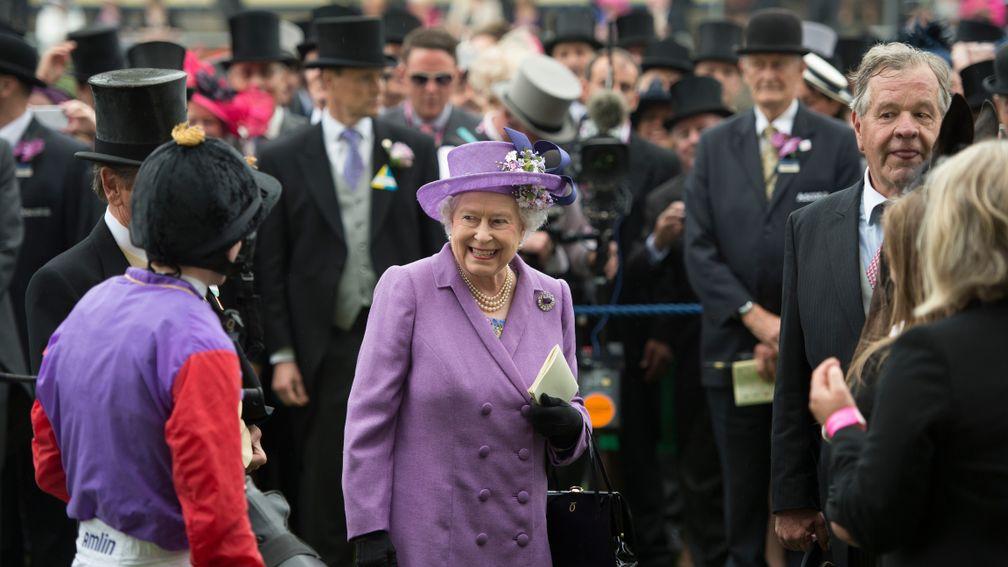
On any normal afternoon, a Royal Ascot winner for Lady Jane Cecil, just nine days after the sad death of her husband Sir Henry, one of the best-loved men ever to train on the British turf, would have been more good news than any racing fan could wish for. Riposte’s Ribblesdale Stakes success was poignant and joyous and it amply filled the void left by the great man’s passing.
This, however, was no ordinary afternoon, as the following day’s front-page headlines went on to prove. This was the day when the Queen won the Gold Cup. What’s more, she became the first reigning monarch to take the coveted prize since its inception some 207 years before, although the fine detail of the moment was not what excited the editors of the national daily papers.
For most of them, racing per se ranked a couple of places behind tiddlywinks in their hit parade, but this was different. This was Her Majesty, still the best-loved national figure in the eyes of the mainstream public, and here she was, in with a favourite’s chance of making history at her home track in front of a crowd of her adoring subjects, with the camera’s of the world’s press afforded an unobstructed view of the moment.
And what a view it was. Friday morning’s papers were stuffed, front pages and back pages, with the kind of photo-shoot that must have seemed like manna from heaven for a beleaguered monarchy; it was wall-to-wall approval, with the Queen centre stage, beaming with unselfconscious, almost unregal, delight as Estimate battled gamely to see off the impertinent challenge of the Irish raider Simenon.
In a public existence characterised by restraint and decorum, here was Elizabeth II in her element, enjoying her favourite recreation and her favourite animals, forgetting for a fleeting instant the demands of public service and giving vent to her sporting instincts. Her smile was a marvel to behold, its significance recognisable at once to every owner, every racegoer and every punter in the land. This was the face of victory, the embodiment of that winning feeling, and the country loved it.
As Estimate nosed to the front a furlong from home, it was as if every living room in the watching world was attempting the unlikely feat of screaming the filly home while simultaneously holding its breath.
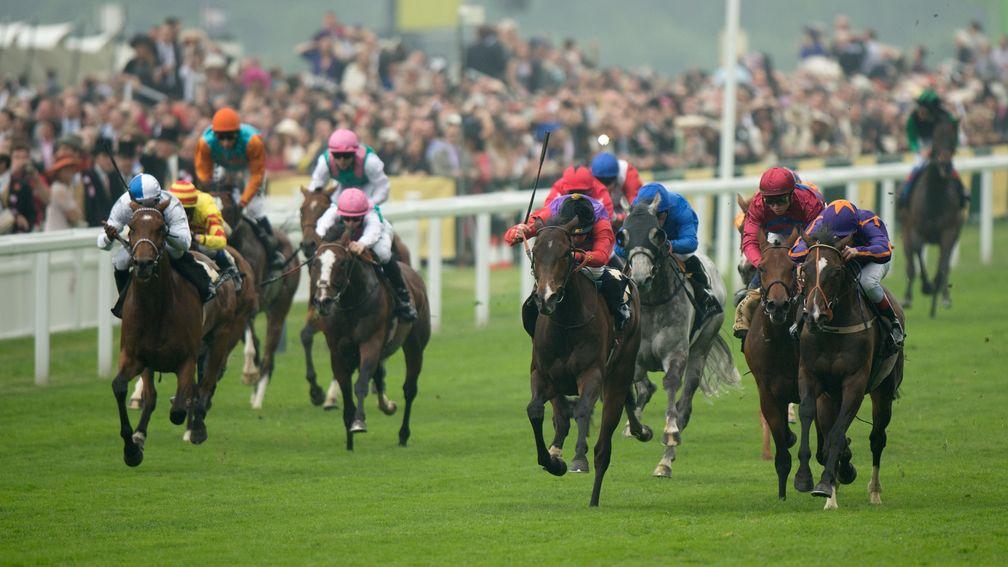
There were challengers on all sides: to her right, Godolphin’s Colour Vision had taken the lead with two to run and was making a bold bid to stay there; to her immediate left, Top Trip was raising a bold gallop for the Gallic pair of Francois Doumen and Mickael Barzalona; widest of all, Johnny Murtagh had Simenon perfectly poised to challenge last and fastest for the Willie Mullins yard. In the saddle on the 7-2 favourite, however, Ryan Moore seemed to be even more resolute and impassable than was his default position. If he had even an ounce of royalist inclination to bolster his usual strength and expertise, now was unquestionably the time to show it. The purple and scarlet silks were ahead, the gold tassel on the black cap swung in time to the rider’s efforts, but the filly’s position was far from secure.
Briefly, Estimate wavered, carried left by the imposing grey figure of Colour Vision and continuing to edge across the track as the challenges rained down. She had the opportunity to give best, but the combination of her own gameness and the insistence of Moore was enough to hold at bay the forces of Ireland, France and Dubai, to the cacophonous approval of the monarchist majority.
Commentator Simon Holt remained just the right side of spontaneous combustion, but he might have been forgiven had he disappeared in flames, because this was a rare moment of racing history, a sweet, organic fruiting of the process that had seen Her Majesty become the turf’s greatest and most tangible asset through decades of defending its place in the national consciousness.
In the royal box, where she had suffered defeat far, far more often than she had savoured victory, the Queen leaned forward keenly, clasped her hands in uncertainty, applauded with vigour as the win offered itself up, then sat back, more than a little relieved, beaming with delight and even allowing herself a deserved moment of puffed-up pride. This was the culmination of a lifetime in the pursuit and service of racing, and she couldn’t help but enjoy it.
Of course, if she’d been able to read the mind of Moore in the final, desperate half a furlong, she’d have heard him say reassuringly that “I never really asked her a serious question and there was plenty left in the tank”. Then, there really would have been no excuse for the animated outbursts of Her Majesty’s racing manager John Warren, whose behaviour in bygone days would almost certainly have seen him beheaded before the meeting was out; but the racecourse crowd watching on big screens seemed to lap up emotion the like of which had barely been seen in 60 years of state visits and meticulously choreographed processions.
This was no royal wave from a gilded carriage; this was full-throttle sporting release from the unlikeliest of sources, and the nation shared in her delight.
The Queen enjoyed a long, passionate and sometimes successful career as a breeder of racehorses, but as the landscape of racing changed, she found herself relegated to the lower divisions of the sport, not least behind the royal families of far richer countries. She won all the British Classics bar the Derby, but the last of those successes came with the Oaks and St Leger heroine Dunfermline in 1977, after which such opportunities became thin on the ground.
So when His Highness The Aga Khan gifted her the 2009 filly foal out of Ebaziya, by the top German stallion Monsun, it offered a rare chance to play in the higher echelons once more, albeit with a foal whose pedigree suggested that only with age and distance might she develop into a classy performer.
Certainly there were no high expectations of her as a youngster. Sir Michael Stoute, her chosen trainer, described her as “too big and immature to train at two”, and she wasn’t seen on a racecourse until September 6 of her juvenile campaign. Even then the impact caused barely a tremor, as the 12-1 shot finished seventh of 11 in a one-mile Leicester maiden on good to firm going, ridden by Richard Mullen to finish no closer than seven and three-quarter lengths behind the 80-rated Esentepe, earning the underwhelming comment, “slowly into stride, soon pushed along in rear, never nearer, opened 10-1, touched 9-1”.
“She was an attractive, workmanlike sort of filly, a nice person with a very nice character,” recalls chosen trainer Sir Michael Stoute of her formative months at his Freemason Lodge stable in Newmarket, “but the ones you really notice are the ones that run the fastest and she wasn’t that type, so we never really expected her to set the world alight as a two-year-old.
“She started her three year-old career off nicely, though, and she soon showed that she was very aggressive, very competitive and had a promising future.”
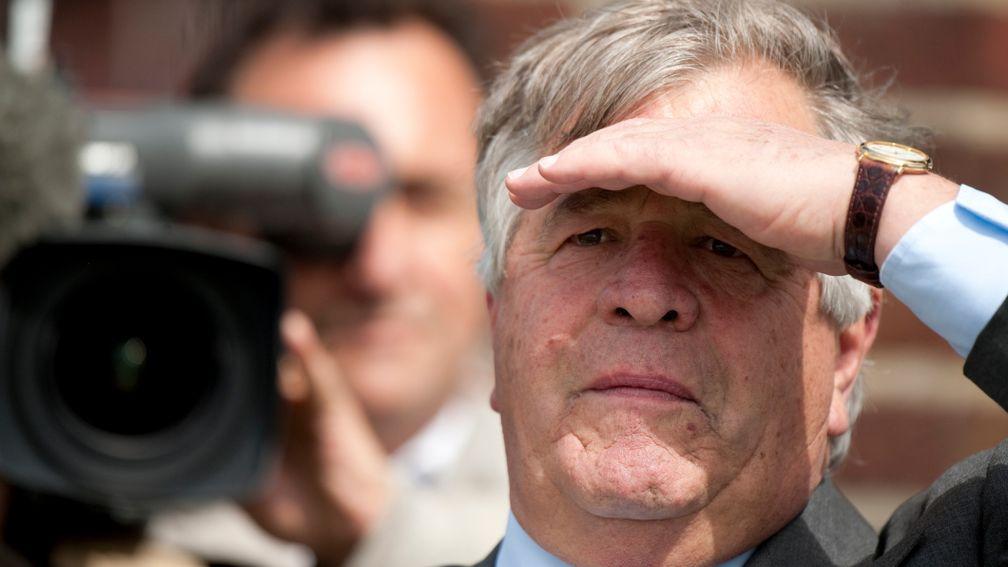
Estimate’s reappearance run came in a maiden on good to soft ground at Salisbury, over a 1m 4f trip that seemed highly likely to suit her needs. Sure enough, although she was consigned to the position of her owner’s second string – with Pat Dobbs wearing the distinguishing red cap – and was allowed to go off at 12-1, not only did she finish more than 11 lengths clear of the Michael Bell-trained Sign Manual, she won by two and three quarter lengths from Mysterious Man, producing a reaction from her trainer which, while it was tempered by the moderate nature of the race, reflected a burgeoning degree of hope.
“Salisbury pleased me and her homework became better with that run under her belt,” recalls Stoute, “and so we decided to go for the Queen’s Vase.”
It was a bold call for a filly so inexperienced, but her trainer knows a thing or two about the royal meeting, was confident she was ready to go there on only her third start, and wasn’t surprised when two miles on soft ground proved to be right up the filly’s street, no matter the Group 3 status of the event. With Ryan Moore on board for the first time, she ran out a five-length winner from Aidan O’Brien’s Athens, “a pretty smart performance” as Stoute put it, and one that fuelled dreams of greater things to come.
Estimate was beaten when dropped in trip for the Lillie Langtry at Goodwood and Doncaster’s Park Hill Stakes to round off her three-year-old season, but the die was already cast, the plan all but finalised, with the active consent of the Queen.
“For a filly with her pedigree and ownership, once she’d won the Vase, the Gold Cup was an obvious target,” explains the veteran trainer. “With an owner like Her Majesty, you were always looking for runners there, ones that could be competitive at her meeting, and it was certainly something we talked about together because she loved discussing what you were thinking about her horses.
“Some people weren’t totally convinced that she was extremely knowledgeable and that she had an impressive retention of detail, but horses were a big part of her life and she’d been doing it for a very long time, so she knew what she was talking about and we all had big hopes for Estimate.”
'She was always very understanding'
Stoute has been around the block enough times to be able to deal with the rigours of preparing a high-profile horse for a big race, but there’s high-profile and there’s high-profile, and a Gold Cup favourite for Her Majesty the Queen brings with it an undoubted degree of public expectation. Fortunately, this was one patron who made the job easier rather than harder.
“You put pressure on yourself because it’s what you do for a living and you have a great involvement with the animals,” explains the trainer, “but she was never the kind of owner who would add to that pressure. She was always very understanding because she’d had a lot of losers over the years and she was accustomed to the feeling. She understood the sport, knew the horses and made your job more straightforward.”
The filly herself was mostly plain sailing as well, although with a few of the quirks that are more easily forgiven if accompanied by above-average ability.
“She’s a lively filly that has a lot of energy and gets bored every now and again,” said Stoute of his rising star. “She can be a little bit narky. Her resolution can never be questioned, but she is a character, and they [the staff] do a great job with her.”
So it was that the characterful Estimate, who Stoute added could also be “a pain in the backside”, made her way to Royal Ascot with the high hopes of a public beyond the little world of racing. Mass approval would have counted for little, were it not for the fact that she’d won at the meeting before, seemed tailor-made for the 2m 4f distance, and although she faced 13 rivals from across Europe, eight of them higher rated than herself, she was progressive and looked open to substantial promotion through the ranks.
Stoute remembers severe doubts in the lead-up to the race, followed by feelings of something approaching confidence through the middle stages, but admits that as the field turned for home, doubts began to creep back in.
“I really felt it was a tough task, I wasn’t confident at all with her taking on the boys,” he said afterwards. “Her preparation had gone well and she was bred to have a big chance of getting the trip but she had to step up.
“I recall she was travelling very nicely, but all of a sudden they straightened up and it looked as though it was going to be very competitive, and it was. When Johnny Murtagh [on Simenon] came to us in the final furlong it was a bit worrying, but I think Ryan always thought he’d hang on.”
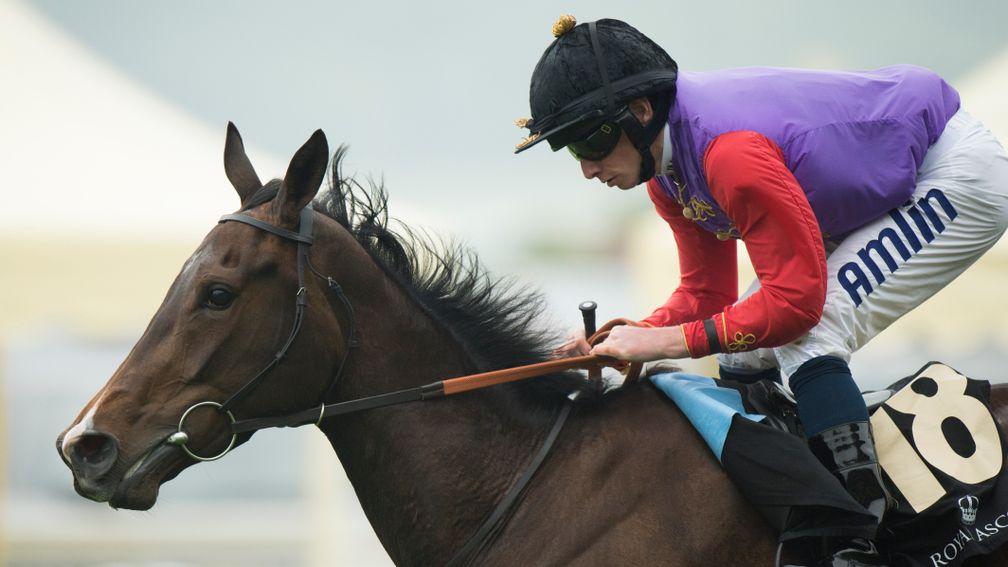
Moore, according to his post-race reaction, felt that “we had the best horse in the best shape on the day”, insisted that the filly “was always holding them”, and that despite incurring a two-day ban for drifting across the track, he was always happy with how the race developed. “We had a good draw and the pace wasn’t mad early on,” he explained, “but she relaxes so well. She gets there and doesn’t do a lot, but she was always holding them.”
The normally taciturn rider, who added that the crowd’s reaction to the success was “unlike anything else I’ve heard on the track”, gave a lengthy debrief to both the Queen and the Princess Royal while Stoute described just what an honour it was to give the owner her first Gold Cup success (also Moore’s first and his own second): “She didn’t mention it beforehand, but she said afterwards that this was the one race she really wanted to win, which made it all the more special.”
In the aftermath, Moore and his wife Michelle with Stoute and his partner Coral Pritchard-Gordon, were invited to Windsor for a rather less frantic and more informal discussion of the events of the day. Stoute, never one to give away details lightly, says only that “we had a very pleasant evening there”.
For the rest of us, the whole day was a heartwarming affirmation of the great qualities of Her Majesty as a racehorse owner, and just reward for her lifetime of service to the sport. Not to mention a cracking Gold Cup that brought a smile to so many faces, not least the Queen’s.
In Tuesday's Racing Post
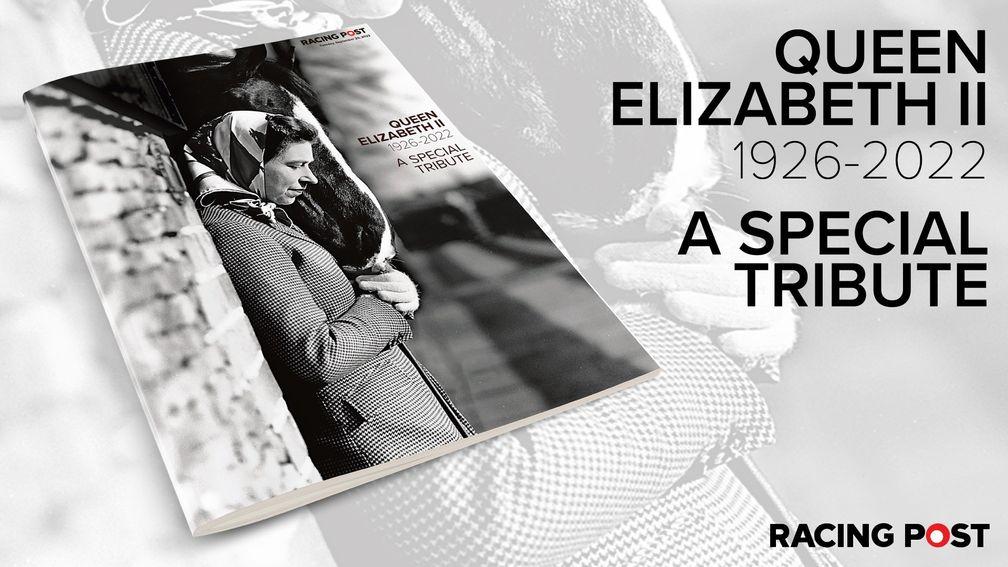
Published on 10 September 2022inNews
Last updated 11:15, 19 September 2022
- The latest edition of the Racing Post is available to read online now - here's how you can access it
- How Smart View recorded a 76 per cent profit at the Cheltenham Festival
- Smart View is available on the Racing Post app - how to read the revolutionary new racecard
- Levy reform talks 'accelerating' as clock ticks down to April deadline for agreement
- Kieran Shoemark lands another plum Meydan ride for Gosden stable on Trawlerman in Saturday's Dubai Gold Cup
- The latest edition of the Racing Post is available to read online now - here's how you can access it
- How Smart View recorded a 76 per cent profit at the Cheltenham Festival
- Smart View is available on the Racing Post app - how to read the revolutionary new racecard
- Levy reform talks 'accelerating' as clock ticks down to April deadline for agreement
- Kieran Shoemark lands another plum Meydan ride for Gosden stable on Trawlerman in Saturday's Dubai Gold Cup